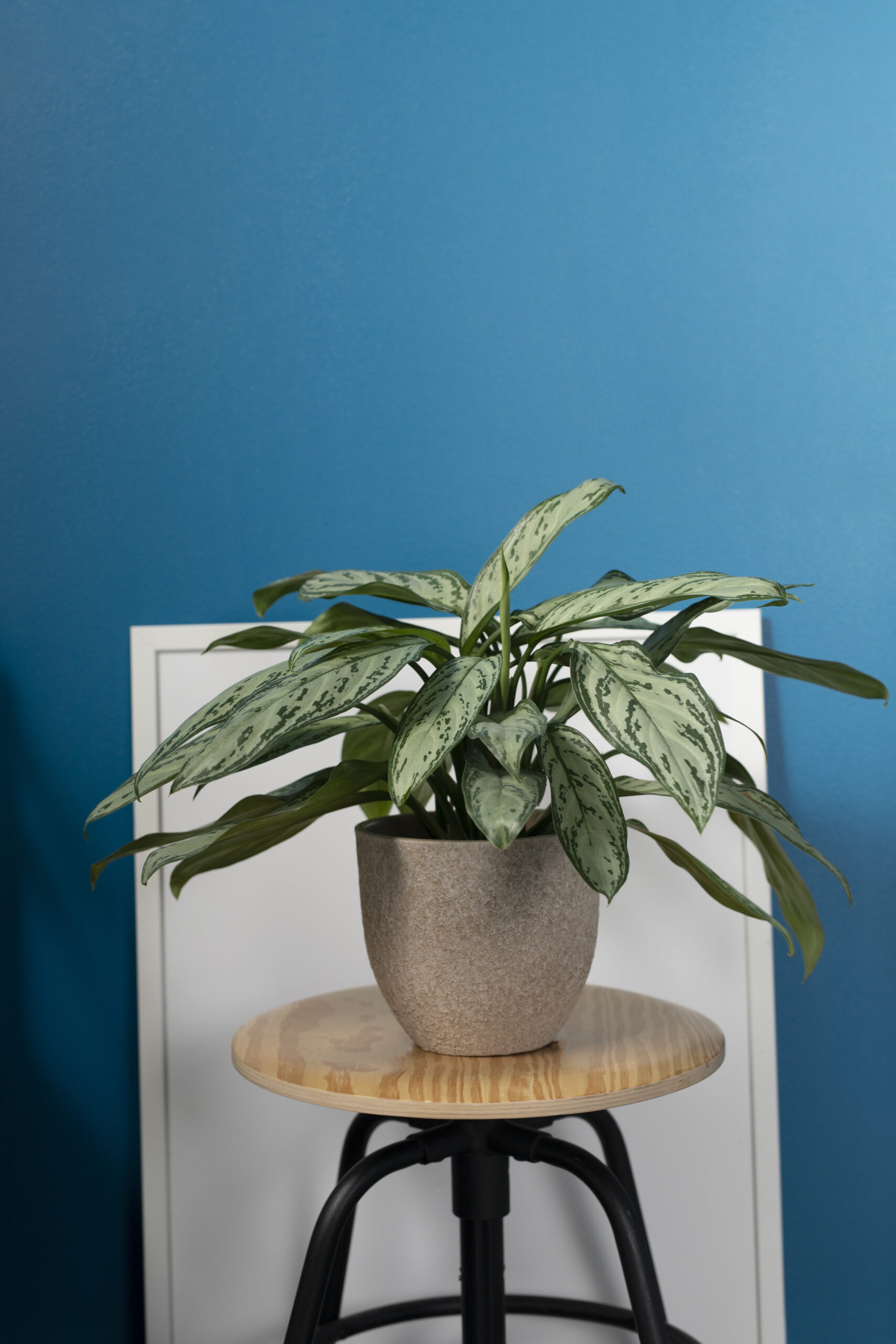
Caring for an Aglaonema Snow White plant involves several key steps to ensure it thrives
Aglaonema Snow White prefers bright, indirect light. It can tolerate lower light conditions, but its growth may slow down, and the variegation may become less pronounced.). Avoid direct sunlight, as it can scorch the leaves.
Watering:
Water the plant when the top inch of soil feels dry. Ensure that the pot has good drainage to prevent waterlogging, which can lead to root rot. During winter, reduce watering frequency as the plant’s growth slows down.
Humidity:
This plant enjoys moderate to high humidity. If the air is too dry, especially during winter when indoor heating is on, consider using a humidifier or placing the plant on a pebble tray filled with water.).
Temperature:
Keep the plant in a warm environment with temperatures between 65-80°F (18-27°C). Avoid cold drafts and sudden temperature changes, as Aglaonema Snow White is sensitive to cold.).
Soil:
Use a well-draining potting mix, such as a mix designed for houseplants or a combination of potting soil, perlite, and peat moss.).
Fertilizing:
Feed the plant with a balanced liquid fertilizer every 4-6 weeks during the growing season (spring and summer.). Reduce or stop fertilizing during the fall and winter months.
Pruning:
Trim any yellow or damaged leaves to keep the plant looking tidy and to encourage new growth. Regular pruning can also help maintain its shape.
Repotting:
Repot the plant every 2-3 years or when it becomes root-bound. Choose a pot that is slightly larger than the current one and refresh the soil.
Pests:
Watch for common houseplant pests like spider mites, mealybugs, and aphids. If pests are detected, treat the plant with insecticidal soap or neem oil.
Cleaning:
Wipe the leaves periodically with a damp cloth to remove dust and keep the plant looking vibrant.). This also helps the plant photosynthesize more efficiently.
By following these care tips, your Aglaonema Snow White should remain healthy and attractive.).